In Pictures: Islam’s Sexual Enslavement of White Women
Raymond Ibrahim, American Thinker, September 21, 2020
Warning: Orientalist paintings depicting female nudity follow.
Last year, a political party in Germany provoked controversy when it used the following painting in its election campaign to illustrate one of the reasons it was against immigration.
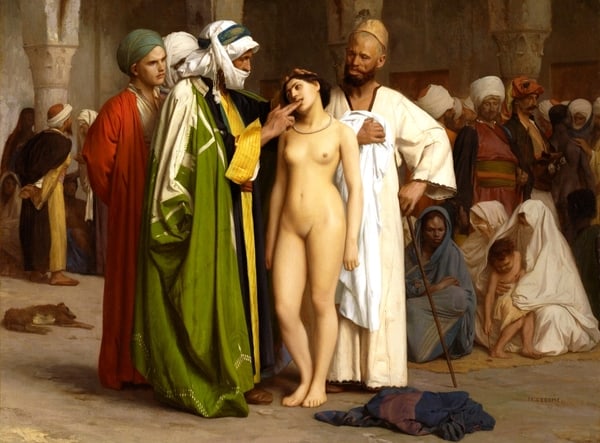
Painted in France in 1866 and titled “Slave Market,” the painting was described as “show[ing] a black, apparently Muslim slave trader displaying a naked young woman with much lighter skin to a group of men for examination,” probably in North Africa.
The Alternative for Germany party (AfD) put up several posters of this painting with the slogan, “So that Europe won’t become Eurabia.” Many on both sides of the Atlantic were triggered by this usage; even the American museum where the original painting is housed sent AfD a letter “insisting that they cease and desist in using this painting” (even though it is in the public domain).
Objectively speaking, the “Slave Market” painting in question portrays a reality that has played out countless times over the centuries: African, Asiatic, and Middle Eastern Muslims have long targeted European women — so much so as to have enslaved millions of them over the centuries (see Sword and Scimitar for copious documentation).
As it happens, there is something else — another medium besides writing — that documents this reality: countless more paintings than the one in question concerning the abduction, trafficking, and sexual enslavement of European women, all of which further underscores the ubiquity and notoriety of this phenomenon. Indeed, this was such a well known theme that many nineteenth- and early twentieth-century artists and painters specialized in it, often based on their own eyewitness accounts. (As one art gallery puts it, “Many … of the most important painters did travel [to the Muslim world] themselves, and what they painted was based on the sketches they had made while they were there[.])
Below are just 20 such paintings (there are many more). Aside from noting the artist’s name; year of painting; and, where possible, title—information which is often difficult to ascertain — I’ve limited my remarks to important asides and clarifications, mostly in the first few paintings, leaving the rest to speak for themselves. They follow.
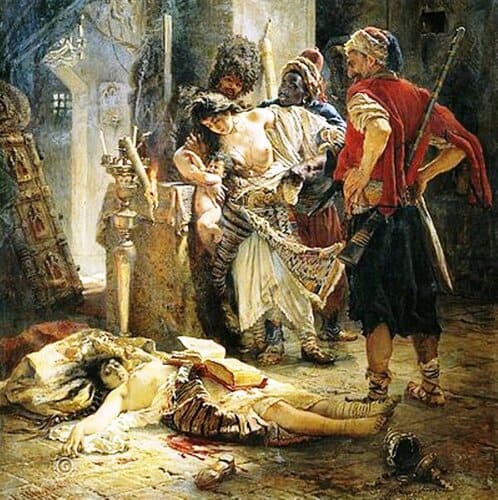
“The Bulgarian Martyresses,” by Konstantin Makovsky, 1877. It depicts events from a year earlier, when Ottoman irregular soldiers (the so-called bashi-bazouks or “crazy heads”) raped and massacred the Christian women of Bulgaria and their children. American journalist MacGahan, who reported from Bulgaria, wrote the following of this incident: “When a Mohammedan has killed a certain number of infidels he is sure of Paradise, no matter what his sins may be. … [T]he ordinary Mussulman takes the precept in broader acceptation, and counts women and children as well. … [T]he Bashi-Bazouks, in order to swell the count, ripped open pregnant women, and killed the unborn infants.”

“The Abduction of a Herzegovinian Woman,” by Jaroslav Čermák, 1861. From the museum’s official description: “Disturbing and extremely evocative, it depicts a white, nude [and pregnant?] Christian woman being abducted from her village by the Ottoman mercenaries who have killed her husband and baby.”
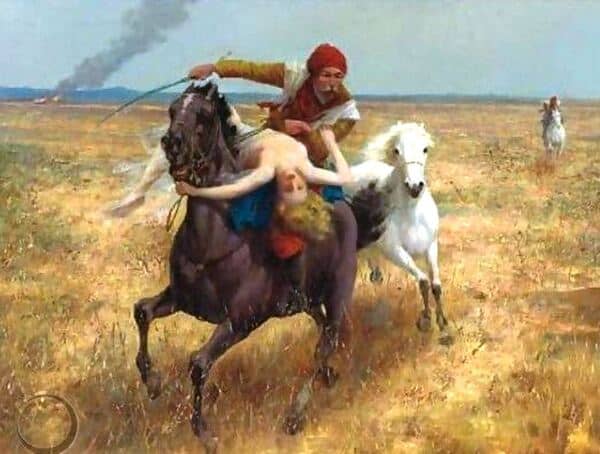
The Abduction, by Eduard Ansen-Hofmann (1820–1904).
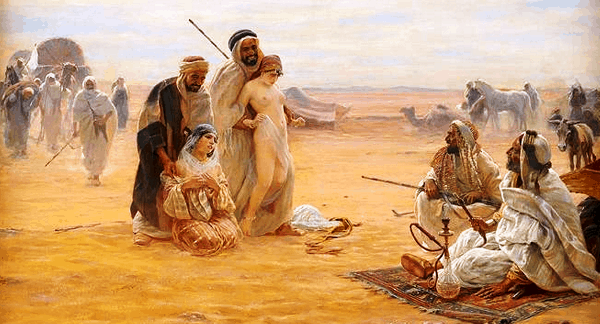
The Slave Market, by Otto Pilny, 1910.
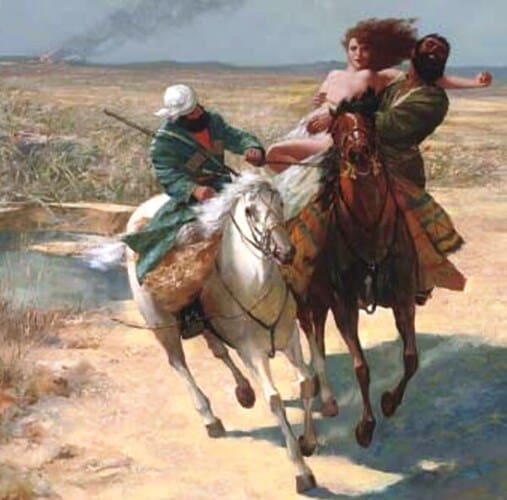
Abducted, by Eduard Ansen-Hofmann (1820–1904).
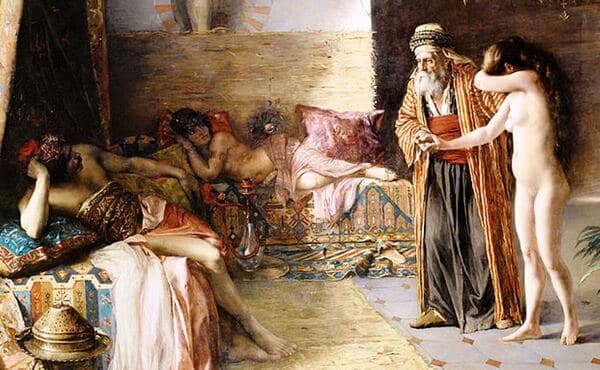
Namona, by Henri Tanoux, 1883.
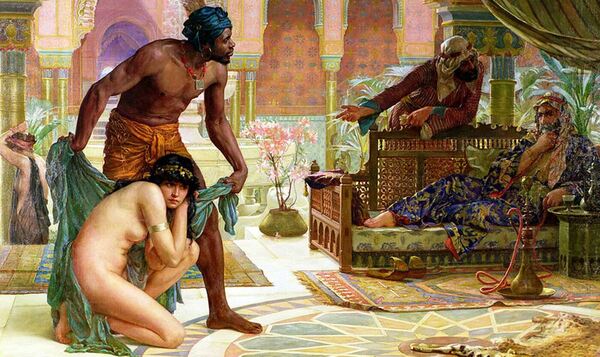
The Bitter Draught of Slavery, by Ernest Norman, 1885.
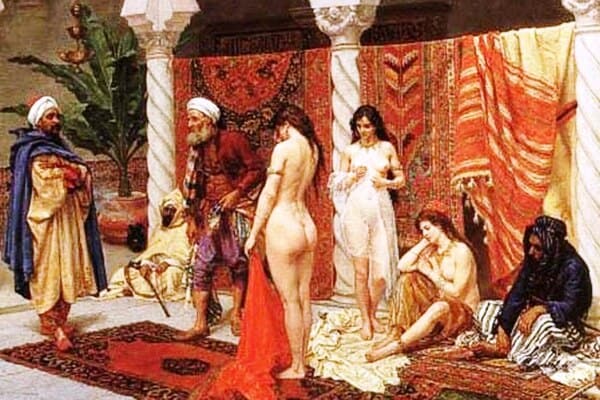
A New Arrival, by Giulio Rosati (1858–1917).
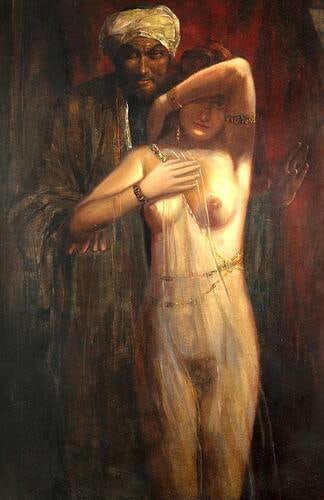
The New Slave Girl, by Eduard Ansen-Hofmann (1820–1904).
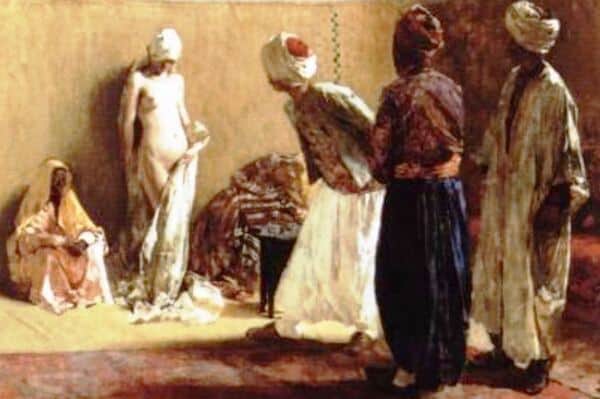
Examining Slaves, by Ettore Cercone, 1890.
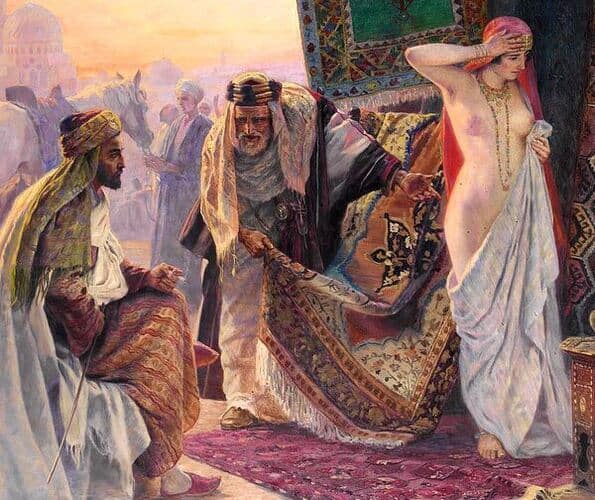
Slave Dealer, by Otto Pilny, 1919.
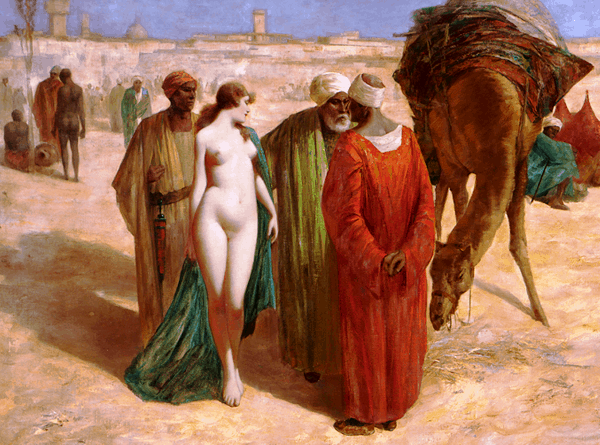
Slave Market, by Eduard Ansen-Hofmann, 1900.
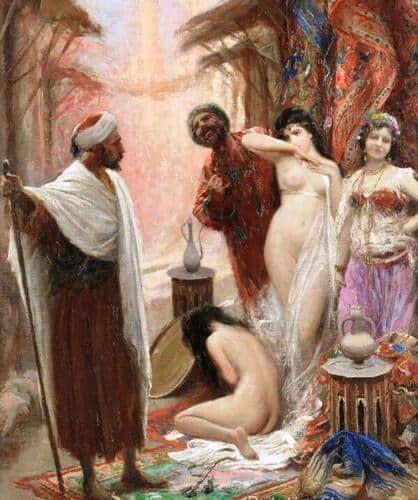
Slave Trade Negotiations, by Fabio Fabbi (1861–1946).
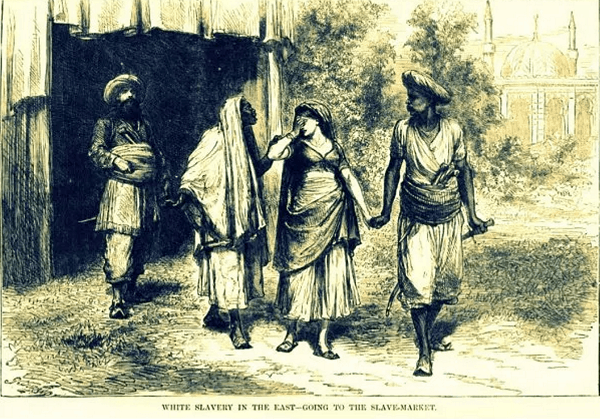
“White Slavery in the East—Going to the Slave Market,” by Harper’s Weekly, April 1875.
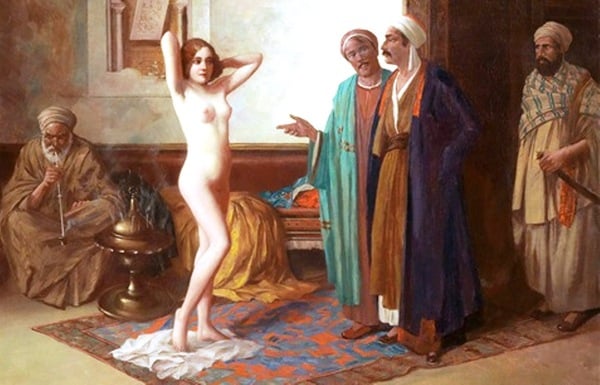
New Arrival, by Eduard Ansen-Hofmann (1820–1904).
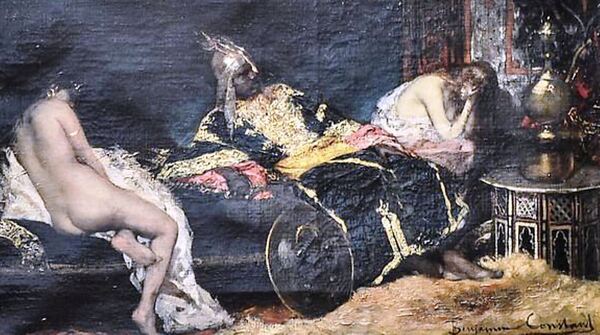
The Serbian Concubine, by Jean-Joseph Benjamin-Constant, 1876.

Slave Market, by Émile Jean-Horace Vernet, 1836.
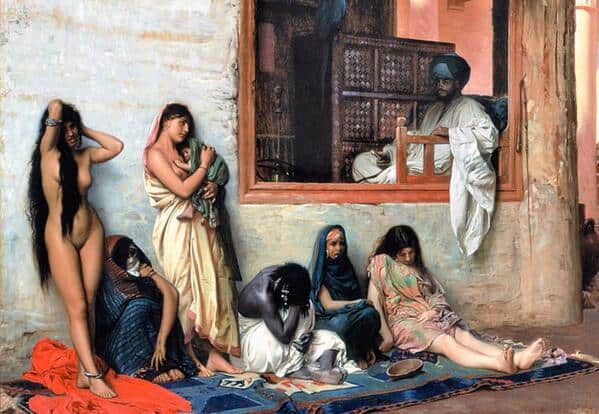
Slave Market, by Jean-Leon Gerome, 1871.
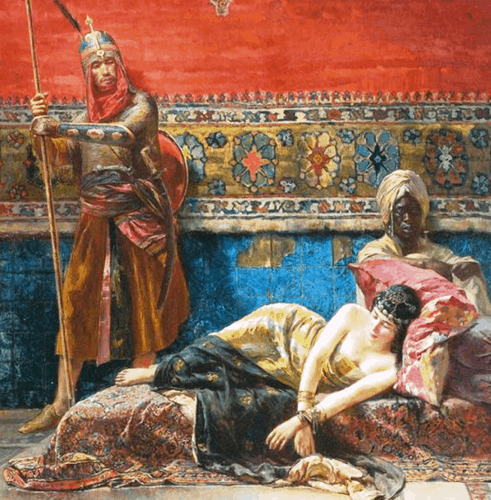
Harem Captive, by Eisenhut Ferencz, 1903.
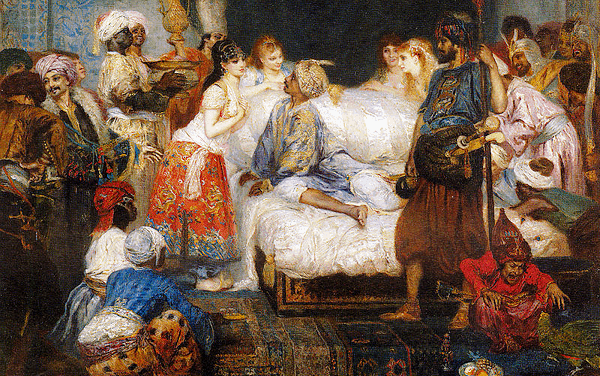
Scene from the Harem, by Fernand Cormon, 1877.















